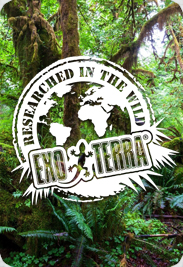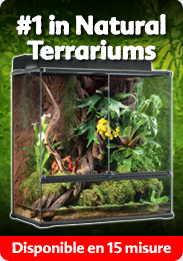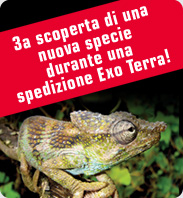Land & lakes - Wilpattu

A snake charmer's spectacled cobra, Naja naja near Lion's Rock, Sigiriya
A snake charmer with a spectacled cobra, Naja naja near Lion's Rock, Sigiriya
We left Sigiryia for Wilpattu through the acient capital of Sri Lanka, Anuradhapura. It is about 100 km and the last part from Anuradhapura to Wilpattu is a nice brand new road. Unfortunately our first and sighting of the Star Tortoise, Geochelone elegans was a roadkill victim. The star tortoise is fairly common in this region as a few others where spotted along this busy road.
Geochelone elegans right off the new A12 Puttalam - Anuradhapura highway.
The Wilpattu National park is breathtaking with its mosaic of forest, grassland and lakes. The birdlife is just overwhelming, from small colorful bee eaters to the majestic Crested Serpent Eagle.
Crested Serpent Eagle in Wilpattu National Park
One of the natural lakes or villus in the park.
Mugger crocodile (Crocodylus palustris) at the edge of one of the villus.
These frogs stayed in huge numbers in the many muddy puddles where they had less change to be spotted by one of the many herons or other birds in and around the clearer villus.
Herons are continuously on the look-out for the very abundant frogs in and near the villus.
One of the most common reptiles in the park is without doubt the Bengal monitor (Varanus bengalensis).
The common Garden Lizard (Calotes versicolor). The red throat in the breeding season leads to a common incorrect name; "Bloodsucker". The garden lizard is occurs throughout Sri Lanka and is probably the most common lizard on the island. It has been introduced in many other parts of the world, especially the Indian Ocean islands.
The vehicles and the team of park rangers that showed us some of the remotest corners of the park. The rangers were extremely helpful in spotting the extraordinary wildlife.
At the park edge, right next to the Indian Ocean, we found this extremely small agamid lizard of about 5 cm or 2". It is probably Sitina sp. or very closely related as we spotted two different species and only one is recorded from the area.
The one recorded from the area and from many coastal regions around the island is Sitina ponticeriana. These lizards are slightly larger then the ones mentioned above.
Sitina ponticeriana of about 11 cm (4").
On our way out to the park, close to dusk, we spotted a pair of Start Tortoise almost ready to mate. At least we saw the much smaller male was chasing the larger female for several meters before they disappeared in the vegetation.
A pair of Geochelone elegans on the park's dirt road. The smaller male running behind the larger female. Star Tortoises seem to be most active right before sunset.
Our next destination is beach area near Putalam, where we will spend the last days near the ocean to relax after this very intensive expedition!
More to come soon...
From Knuckles Range to Wilpattu National Park

Ceratophora tennentii right next to the main road in the lower ranges.
We leave the central highlands for the lowland plains of the Wilpattu region. Wilpattu means lands and lakes. Before heading down we make a short stop in Knuckels Range in search of some other highland's reptile forms. The road to Knuckels Range is steep and with deep drops. Unfortunately the entire way up is through huge tea plantations with very little original vegetation left. Even all the way on the top, the primary vegetation is limited and we walked up a small path to a communication mast. Nothing was actually found, besides a lost buffalo, along this path although we were accompanied by a local guide.

A water buffalo bull on top of the mountain.
It was actually the ranger in the office of the Knuckels National Heritage and Wilderness Area that took us in some secondary forest patch to show us a "Sri Lanka Chameleon". Exited we followed him into the bushes where he found a pair of leaf nosed lizards or Ceratophora tennentii.

A male Ceratophora tennentii.
While probably not being able to survive in the tea plantations, it was remarkable to find this lizard in secondary forest. On our way down we even found an additional animal next to the main road which shows that this species has a wider range than initially thought.

Sigirya or Lion's Rock
We spent the night in Sigirya or Lions Rock, a historical rock fortress. The next morning we left for Wilpattu National Park.
More soon!
Sent from Sri Lanka
The highlands in central Sri Lanka

A very colorful Calotes calotes male basking in the early morning sun.
Measuring the UVB light near the Sinharaja Forest at the Morningside at high noon. We measured 290 micro watts per centimeter square at temperatures of 34°C. No reptiles were active at this time of the day. It shows that it is also very important to know the reptile species their activity patterns in the wild in order to know their necessary exposure to UVB light.
We left Sinharaja Morningside and headed to the north into the highlands. Our goal here is to observe some of the most conspicuous agamid lizards. Most Sri Lankan agamids have a prominent rostral appendage.

A male
Ceratophora stoddartii basking on a mossy tree trunk in Hortons Plains.
Our first stop was in Hortons Plains where we searched for the Rhino Horn Lizard or Ceratophora stoddartii. This is a semi-arboreal species is found vertically on tree trunks and lianas inside the primary forest. Sometimes they are found foraging on the ground for insects, caterpillars and earthworms.
A female Ceratophora stoddartii.

A male
Ceratophora stoddartii in defense posture.
When disturbed the animals open their mouth wide, showing their orange tongs and pointing their horns upwards.
Off to Knuckles Range now...
Through the tea plantations to Sinharaja Morningside
This eastern part of the Sinharaja supposed to have a huge concentration of reptiles and amphibians. It is a bit higher (1100 m) then the western side and also less disturbed. In this part there are still wild elephants, but all we saw was some fresh dung.

Unidentified frog species.
Morningside
One of the targets here were again the various species of agamid lizards. Unfortunately during our three day stay we had pouring rain, not the ideal weather for reptiles. Frogs and toads however were less of a problem.

Observing a tiny frog, probably a new species.
We believe we even found a total new species of frog, a very tiny species of under 8 mm! It lives in gravel beds in small forest streams. Exceptionally well camouflaged as the frogs are the same size as some of the gravel pieces and have the same colour. We could only locate them when they jumped and spotted them landing.

Tiny new frog species, probably the smallest species yet!
Below an overview of some other species found in this part of Sinharaja. We did not yet determine them, but it give you an idea of the variety.
A unidentified microhylid, possibly undescribed.
A fairly common frog along the small streams in the forest.

Otocryptis wiegmanni was only agamid we found

On our way back out of the Sinharaja forest
From here we leave for Hortons Plains to the north. More tomorrow!
Sent from Sri Lanka (Images from Benny Trap and Emmanuel Van Heygen)
Looking for the green viper
It was our last day at this side of the Sinharaja forest and still did not find the Sri Lankan Green Viper, Trimeresurus trigonocephalus.
In the early morning we were lucky enough to encounter a specimen basking in some bushes on a river bank. It clearly had just eaten as the prey was still clearly visible inside, probably a giant tree frog.

Trimeresurus trigonocephalus
 Trimeresurus trigonocephalus
Trimeresurus trigonocephalus on the river bank
Other animals we encountered that day were amongst
Many more the kangaroo lizard, Otocryptis wiegmanni and a female Calotes calotes.

Otocryptis wiegmanni

Calotes calotes female
Now we are on our way to the morning side of the Sinharaja forest, one of the densest reptile hotspots of Sri Lanka. More tomorrow!
Sent from Sri Lanka
Sinharaja continued
Due to some reception problems some images weren't send properly. First a second attempt...

Ahaetulla nasuta

Lyriocephalus scutatus male in its natural habitat
Sent from Sri Lanka
Great encounters in the Sinharaja Forest

The path leading into the Sinharaja Forest
For two days we have now been exploring the western side of the Sinharaja forest. Yesterday we entered the Sinharaja national park for the first time and were initially a bit disappointed with the reptiles and amphibians we found. But the further we penetrated the primary forest the more species were found.
Calotes calotes
One of the first animals to be found was again a stunning Calotes calotes male. Our target species here is Lyriocephalus scutatus, a stunning Agamid that should be abundant in this area. But we didn't have much luck locating the species. We checked dense shaded forest patches which was supposed to be the species preferred habitat.
In our search for Lyriocephalus scutatus we encountered however numerous other species, like Otocryptis wiegmanni, a smaller Agamid fairly common in this area.

Otocryptis wiegmanni
On a giant tree fern vine snake, Ahaetulla nasuta, was encountered looking for it next pray. This snakes prays predominantly on lizards, especially in the juvenile stage.
It was only the second day that we finally found Lyriocephalus scutatus near a stream about a 100m off the main path. What a stunning lizard!
The team members were extremely happy to properly document this extraordinary species. Hopefully we are able to post some more images soon.
Sent from Sri Lanka
To Sinharaja Forest
The Exo Terra Team was welcomed by local staff upon arrival in Colombo. After changing some money in the capital we left almost immediately for a 5 hour journey up to the Sinharaja forest. It is actually only about a 100 km but the hectic traffic and the sometimes bad road conditions held us hostage. We spotted our first reptile right of the main road on a fence, the colourful Calotes calotes. These are very abundant lizards, but nevertheless very striking, especially the males.

A male
Calotes calotes

Smoking team member Benny Trap photographing the Calotes calotes.
After photographing the lizard we continued to the rainforest edge where we booked some basic accommodation.

Rice fields and tea plantations near our sleeping quarters with in the background the Sinharaja Forest.
We arrived around 2 pm and almost immediately we located the first snake of the trip. A real team effort was necessary to get this rat snake out of the tree. Exhausted from the trip we all went straight to bed to catch up on sleep. As soon as the sun set, some of us went for a night walk in the area. More tomorrow!
Sent from Sri Lanka
In India...
After an eventless flight the Exo Terra team landed in the Indian city of Mumbai where we have a connecting flight to Colombo the capital of Sri Lanka. It will be early in the morning when we arrive there, but we already decided to immediately move on to our first research destination. Stay tuned!
On our way!
This morning 5 members of the Exo Terra expedition team came together in Brussels Airport to catch the plane to Colombo, Sri Lanka where this years Exo Terra reptile expedition takes place. Roland Zobel (Germany), Edgar Wefer (Venezuela), Benny Trap (Germany), Guy Van Heygen (Belgium) and myself (Emmanuel Van Heygen) are now waiting for our flight. In Mumbai the other team members, Loren Leigh (USA) and Damian Goodall (Australia) will join us. We will keep you posted!
Situata al largo della costa meridionale dell’India, l’isola tropicale dello Sri Lanka ha per secoli incantato i suoi visitatori con le sue fitte foreste ed il suo ricco patrimonio artistico. Lo Sri Lanka ha una tradizione di oltre 2500 anni di storia. Il variegato bagaglio culturale di quest’area è stato fortemente influenzato dalla religione buddista. Tuttavia è possibile riscontrare anche tracce di usi e costumi provenienti da Olanda e Inghilterra, che in passato colonizzarono il territorio.
Lo Sri Lanka è uno dei piu importanti scenari di biodiversità al mondo,ed a sua volta l’area maggiormente bio-diversificata dell’intero territorio asiatico. Le sue caratteristiche condizioni climatiche e topografiche hanno favorito lo sviluppo di una ricca varietà di specie. Gran parte di esse sono di origine endemica e sono pertanto frutto del distacco dell’isola dal subcontinente indiano avvenuto durante il tardo Mesozoico. Ciò ha grande rilevanza soprattutto per quanto riguarda i rettili e gli anfibi, presenti in un’ampia varietà di ecosistemi come montagne, foreste pluviali, pianure, praterie e paludi.






























































